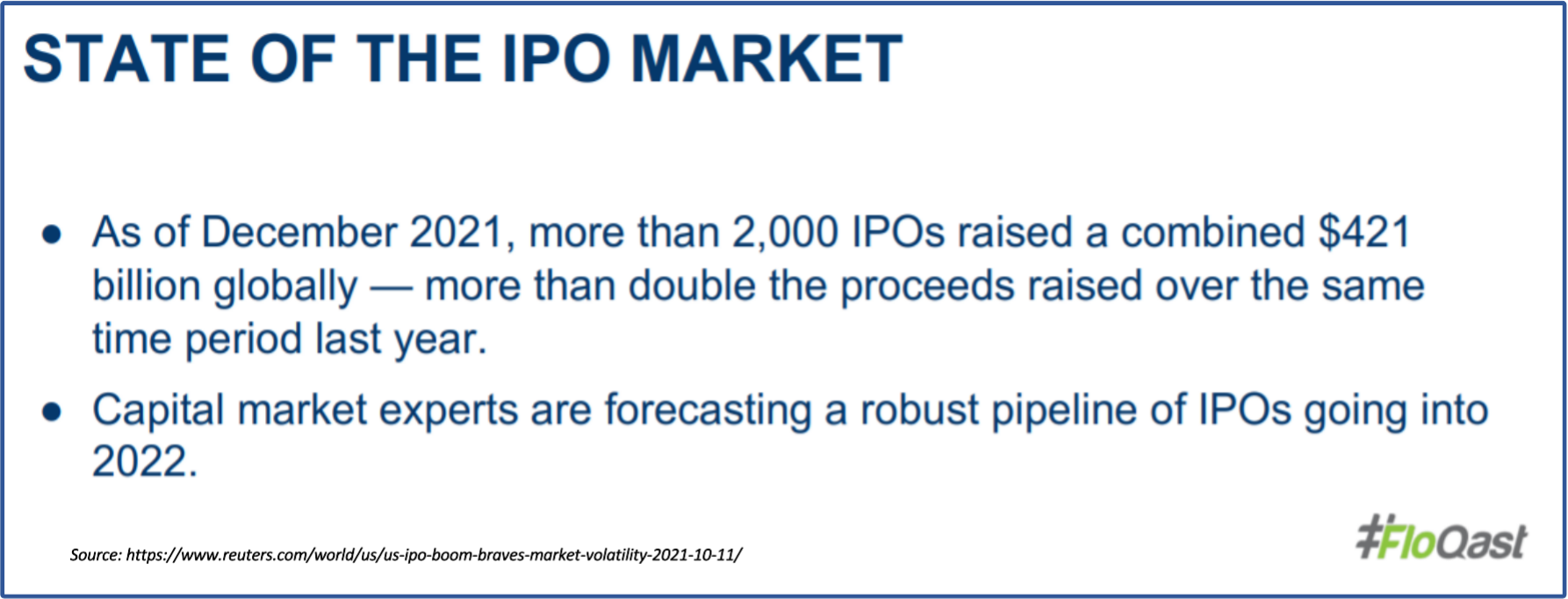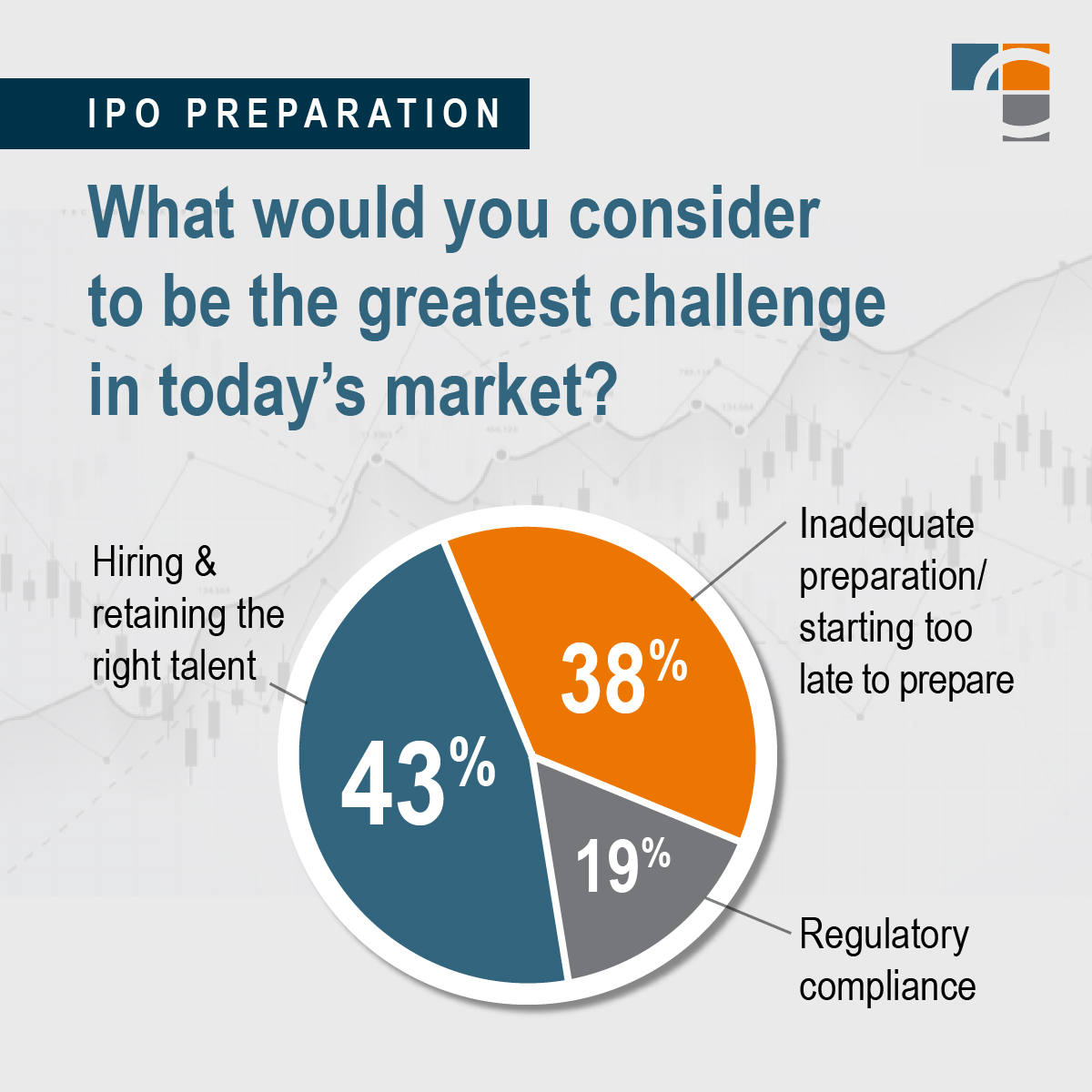The initial public offering (IPO) market in 2021 saw more than 2,000 organizations go public, with the record-setting pace expected to continue into 2022.
Despite volatility in the marketplace resulting from, among other things, the pandemic, inflation, and unexpected price swings, U.S. firms are resiliently heading into Q122 preparing to IPO.
Corporate transaction experts from CrossCountry Consulting and Donnelly Financial Solutions (DFIN) joined FloQast to discuss IPO preparation best practices on Dec. 14, spotlighting the processes, considerations, and support today’s companies need for a successful IPO. You can access the webinar recording here.
One key step on the path toward IPO is – to the degree to which it is possible – ensuring business predictability.

When asking the question, “Am I ready to go public?” you might respond with another question: “How predictable is my business?”
Predictability is what capital markets ultimately desire.
Systematizing Your Predictability
Public markets seek to understand the current and future state of pre-IPO firms. Because the maturity of companies varies, their ability to report meaningful metrics often needs attention in preparation for a capital markets event.
Private equity-backed firms, for instance, commonly operate on a model whereby KPIs are reported monthly. Bootstrapped and venture capital-backed companies, on the other hand, may not have robust metrics formalized, much less within a framework in which they can be meaningfully reported.
Still, the path toward IPO is paved with transparent metrics pertaining to predictability, such as:
- Revenues.
- Expenses.
- Hiring.
- Run Rates.
- Processes.
While data, and the processes for compiling it, become more mature, companies should also be thinking about additional layers of analyses. If results differ materially from budget, explanations should be documented and discussed. Assumptions and estimates should be updated and reforecasted. A systematized framework for reporting and explaining core operational data is foundational to the IPO process.
Pre-IPO governance enables businesses to predict results, manage change, and mitigate risk well before it’s time to file.
The Right Team at the Right Time
Roughly 12 months ahead of a planned IPO, business leaders should begin the process of an IPO readiness assessment. That said, even the best-prepared companies often have their timelines derailed by external factors beyond anyone’s control. In today’s competitive hiring environment, the ability to hire and retain experienced resources is a key driver to a company’s ability to adequately prepare to be a public registrant.
Staff members who are integral at the pre- and post-IPO stage of the company’s growth can depart unexpectedly, affecting the aforementioned timelines and ability to predict forecast results. In other words, predictability is again in question at a very inopportune time.
This reality is evidenced by poll results from more than 600 webinar attendees: “Hiring & retention” was the top-cited challenge to IPO preparation.

Procuring strategic external resources can be similarly difficult.
Some of the key roles and functions to consider in an IPO team are:
- CFO.
- Assistant Controller.
- Accounting Policy & SEC Reporting.
- FP&A.
- Internal Audit.
- Compliance.
- Tax.
- Investor Relations.
- SEC Counsel.
- Accounting Advisors.
- Underwriters.
- Underwriters Counsel.
- External Auditor.
- Financial Printer.
The right talent at the right time must be baked into the IPO roadmap.
IPO readiness is a distinct discipline, with long-term implications for your business. For help in your IPO journey, contact CrossCountry Consulting today.